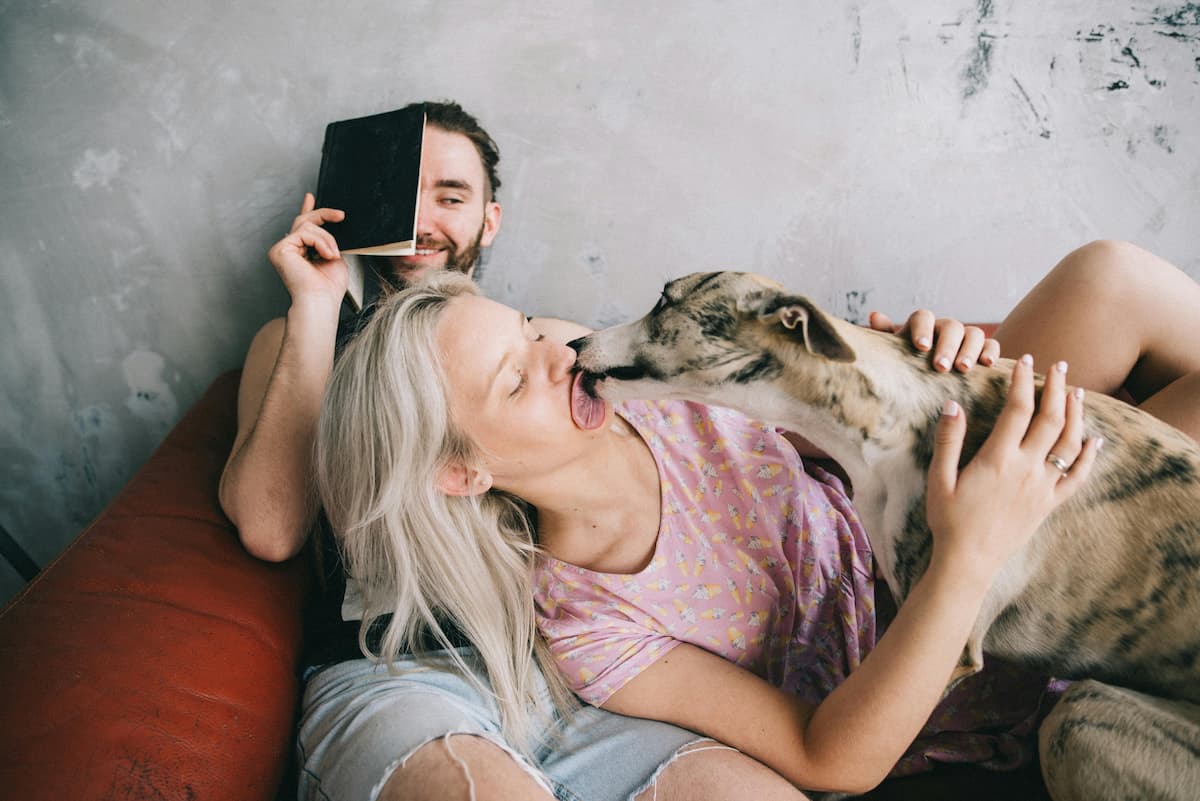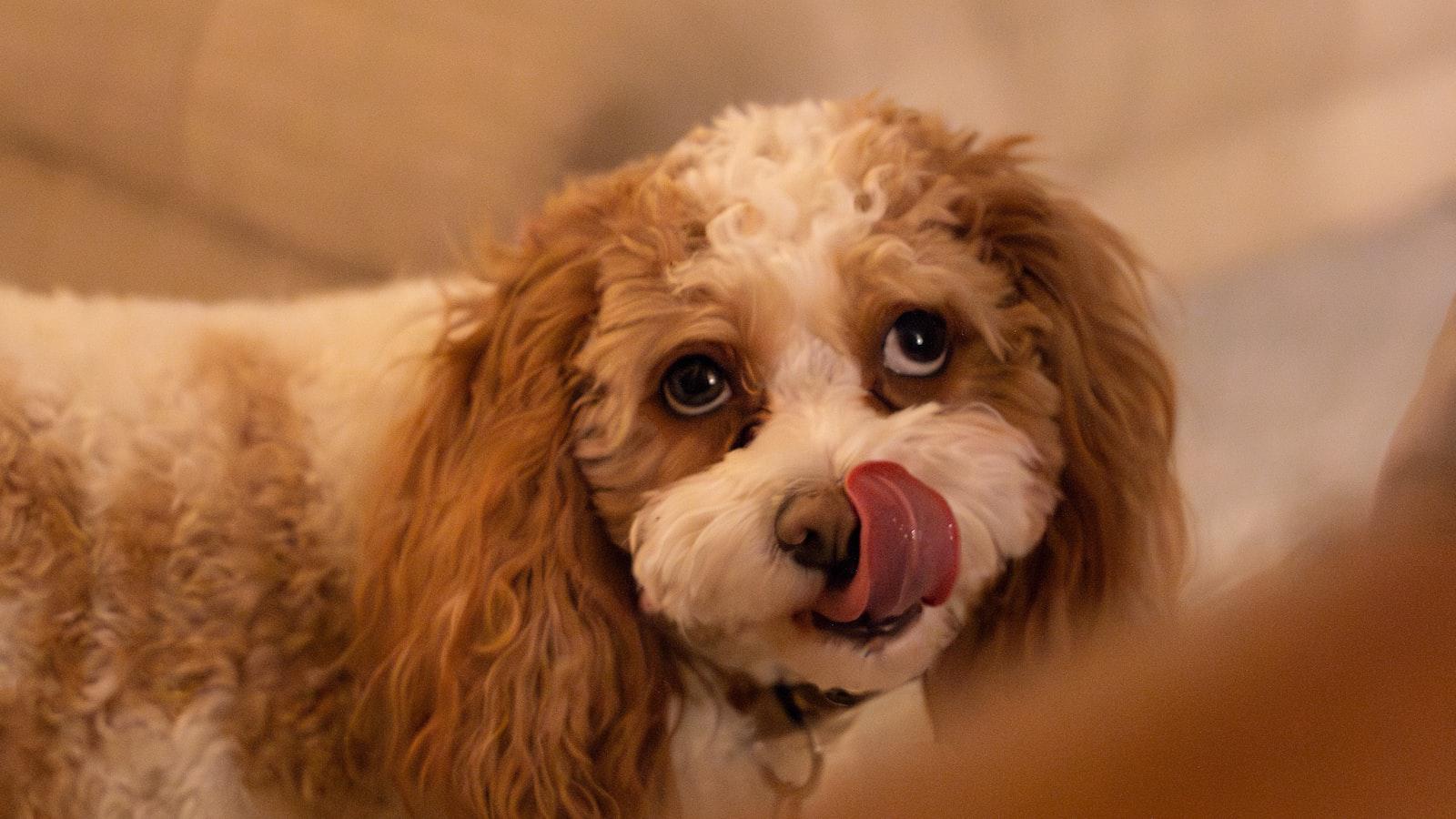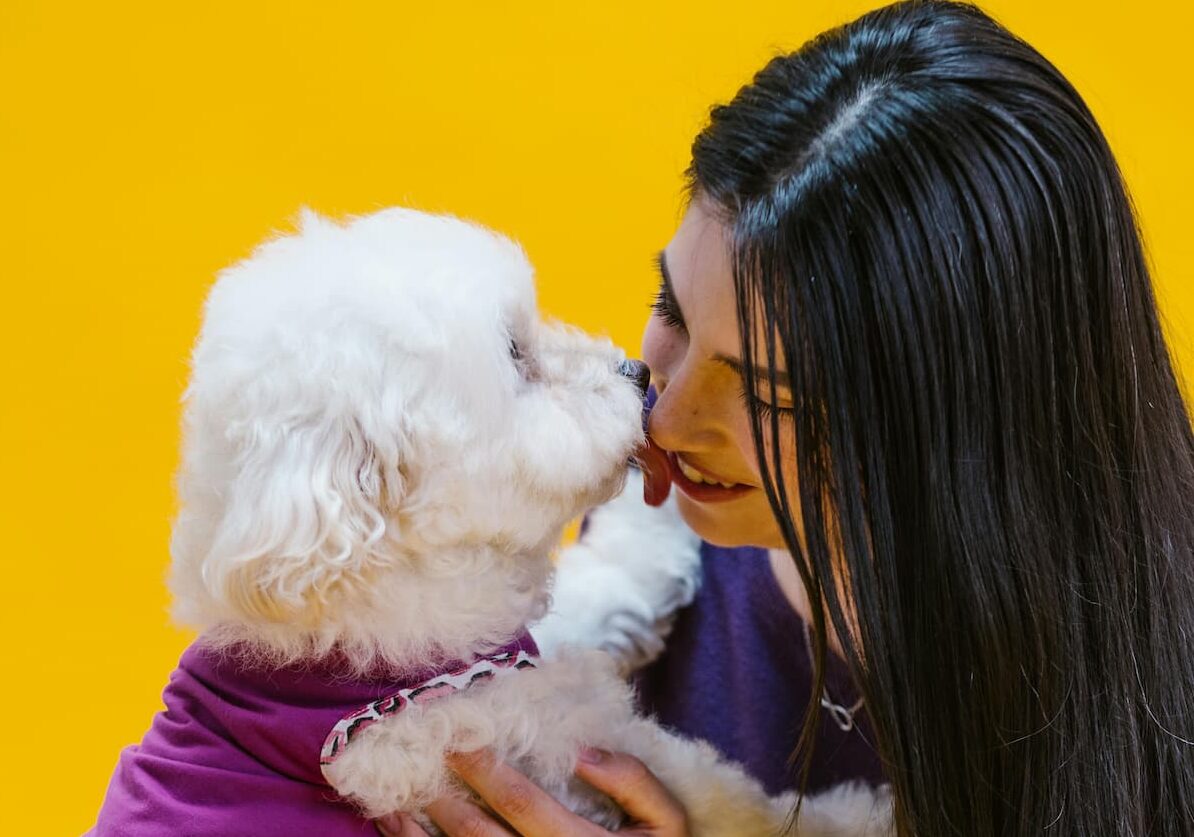Picture this: you find yourself strolling through the neighborhood park on a crisp, sunny morning, enjoying the ethereal symphony of birds chirping overhead.
Suddenly, your eyes zero in on an odd yet strangely adorable behavior unfolding before you.
Two dogs, tails wagging furiously, pause in their playful romp and lock eyes in a moment of pure affection.
And then, it happens: one dog leans in and licks the other dog’s mouth passionately, almost as if they were sharing a secret code.
As a dog lover yourself, you can’t help but wonder, “Why do dogs do that? Why do they lick each other’s mouths?”
Read on to have your questions answered.
Why Do Dogs Lick Other Dogs’ Mouths?
Dogs are fascinating creatures, with behaviors that can sometimes leave us scratching our heads in confusion.
One such behavior is the act of dogs licking each other’s mouths.
If you’ve ever witnessed this curious display of affection, you may have wondered what lies behind this instinctual behavior.
Here are some scientific reasons behind this peculiar behavior:
1. Communication through scent: A dog’s sense of smell is nothing short of extraordinary.
By licking another dog’s mouth, they are able to gather valuable information through the scents exchanged, almost like a canine form of conversation.
Just like humans might shake hands or hug to greet one another, licking serves as a way for dogs to establish trust, convey emotions, and gather information about the other dog’s well-being.
2. Submission and respect: One of the primary reasons dogs engage in mouth licking is to display submission and respect.
By licking another dog’s mouth, they are essentially showing deference and acknowledging the other dog’s higher status within their social hierarchy.
This helps to maintain harmony within a pack, as the submissive dog is effectively signaling that they pose no threat and are willing to comply with the dominant dog’s authority.
3. Social bonding: Furthermore, licking also serves as a means of strengthening social bonds between dogs.
When dogs lick each other’s mouths, they are actively engaging in a bonding ritual that promotes trust and companionship.
Just like how humans may hug or shake hands to express affection, dogs use licking to demonstrate their affection and reinforce their connection to one another.
This behavior releases endorphins in both dogs, creating a positive reinforcement loop and fostering a sense of camaraderie.
4. Healing and nurturing instincts: Similar to how human parents comfort their children through acts of physical affection, licking can serve as a healing mechanism for dogs.
If a dog is injured or feeling unwell, you may notice other dogs in the vicinity licking their mouths, face, or wounds.
This behavior is believed to release endorphins that bring comfort and relief to the suffering dog.
It’s a beautiful way for these social animals to nurture and care for one another.
5. Grooming and hygiene: Dogs also use licking as a way to groom each other and maintain proper hygiene.
When dogs lick each other’s mouths, they may be helping to clean any food residue or debris stuck between their teeth.
This can prevent the buildup of bacteria and potentially reduce the risk of dental issues or infections.
Potential Risks and Challenges of Dog-to-Dog Mouth Licking
While it may seem harmless at first glance, there are a few potential risks and challenges associated with this behavior that every dog owner should be aware of.
Potential Health Risks
1. Transmission of diseases: Dogs can transmit various infections through saliva, including viruses, bacteria, and even parasites.
This is especially true if one dog has a weakened immune system or is currently unwell.
The risk of contagion can be significantly higher if the mouth-licking involves open wounds or sores, as it increases the chances of pathogens entering the bloodstream.
2. Behavioral issues: While dog licking is meant to be a friendly gesture, it can sometimes cross boundaries and lead to aggressive behavior.
Some dogs may perceive excessive licking as an invasion of personal space, causing them discomfort or stress.
This can result in reactive behavior like growling, snapping, or even biting, especially if the recipient dog feels overwhelmed or threatened.
3. Reinforcement of dominant behavior: In certain instances, dogs might use mouth licking as a way to assert their dominance over other dogs.
This can create an unbalanced power dynamic, potentially leading to conflicts within the canine hierarchy.
It’s important to recognize these signs and step in to manage the situation if you notice any changes in behavior or signs of tension during mouth-licking interactions.
FAQ
Q: Why do dogs even engage in mouth licking in the first place?
A: Well, it turns out that licking is an integral part of canine communication.
When dogs lick each other’s mouths, they are often exchanging information.
It’s like a special doggy language that most dogs instinctively understand.
Q: Is it just a way for them to say “hello” to each other?
A: That’s one possibility!
Think of it as a canine handshake or a friendly greeting.
By licking another dog’s mouth, dogs are essentially saying, “Hey there, buddy! I come in peace.”
Q: Is there any other purpose to this licking behavior?
A: Absolutely!
Besides being a form of social bonding, mouth licking can also serve more practical purposes.
For instance, it can be a way for dogs to show submission to a more dominant dog.
The licker may be saying, “I respect your authority and want to avoid any conflict.”
Q: Can dogs also lick each other’s mouths as a sign of affection?
A: Yes, indeed!
Just like dogs show affection by licking their human companions, they can also express love and fondness for each other through mouth licking.
It’s their way of saying, “You mean the world to me, my furry friend.”
Q: Are there any health risks associated with dogs licking each other’s mouths?
A: While it’s generally safe for dogs to engage in this behavior, it’s important to keep a few things in mind.
Doggy kisses can transfer bacteria, so if one dog is sick or has a poor dental hygiene, it could potentially lead to infection in the other dog.
Regular veterinary check-ups and maintaining good oral hygiene can mitigate any risks.
Q: Can we, as dog owners, encourage or discourage this mouth licking behavior?
A: Although it’s ultimately the dogs’ decision to engage in mouth licking, we can indirectly influence their behavior.
If we notice our dog becoming too obsessive with licking or if it makes another dog uncomfortable, it might be a good idea to redirect their attention to other activities.
Positive reinforcement and providing alternative forms of socialization can help achieve this.
Q: Is there anything else we should know about dogs and their mouth licking habits?
A: Well, keep in mind that every dog is unique, and their reasons for engaging in mouth licking can vary.
It’s always important to consider the context, individual temperament, and the relationship between the dogs involved.
Overall, mouth licking is just one of those quirky and adorable things that our canine companions do to communicate and show affection.
Last Words
From an ancestral need to share scents and create social bonds to a display of affection and submission, licking is a multi-purpose tool in a dog’s communication toolkit.
While it may seem strange to us humans, it’s completely normal in the world of canines.
So next time you catch your furry friends engaged in a slobbery exchange, you can appreciate the fascinating dynamics at play.
Remember, it’s their way of saying “Hey buddy, I’m part of your pack, and I care about you!”
Keep observing their delightful antics and continue to foster a loving environment for your four-legged pals.
Whether it’s tongue-to-tongue or nose-to-nose, don’t be alarmed – it’s just Doglish being spoken fluently!











